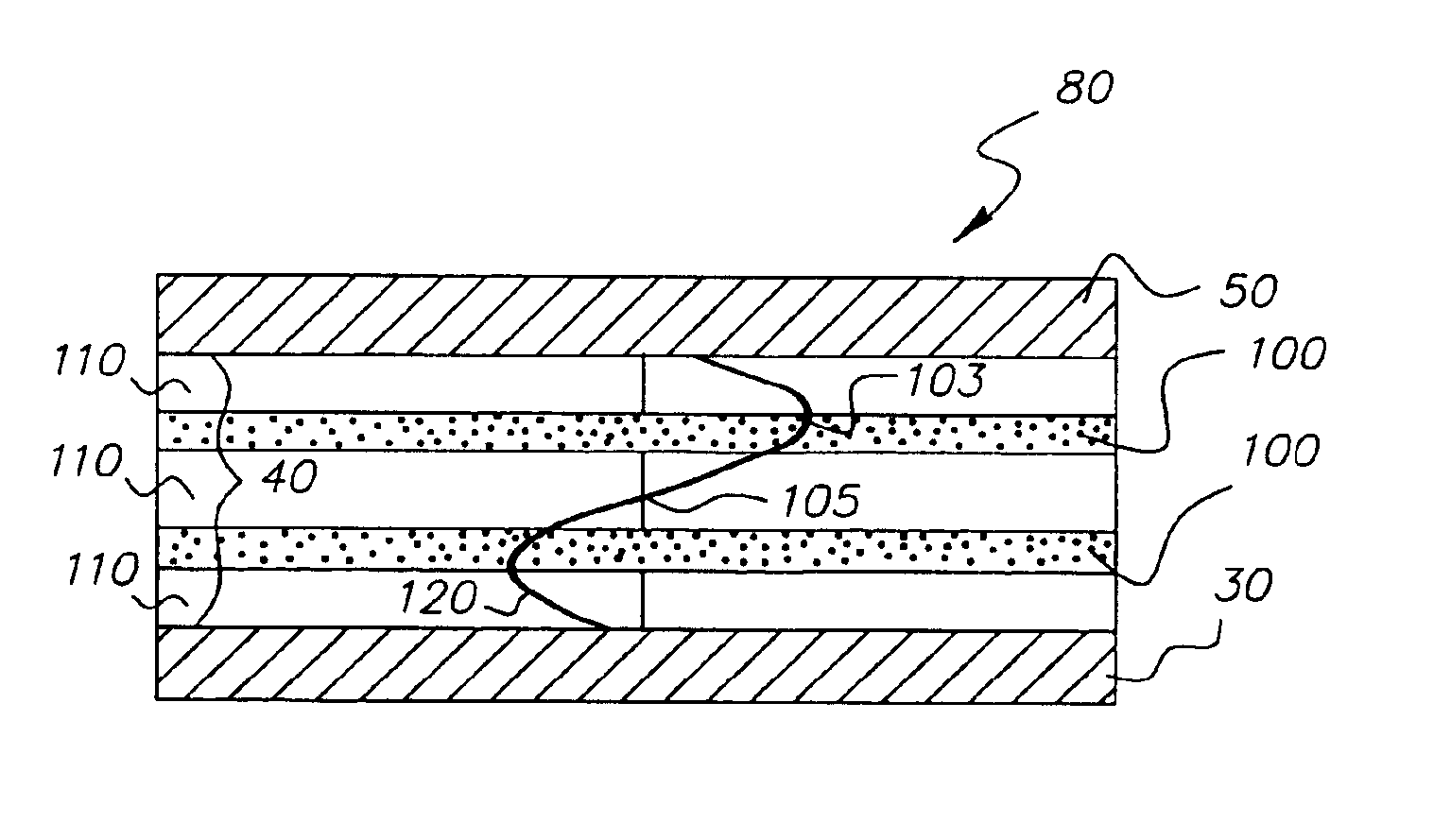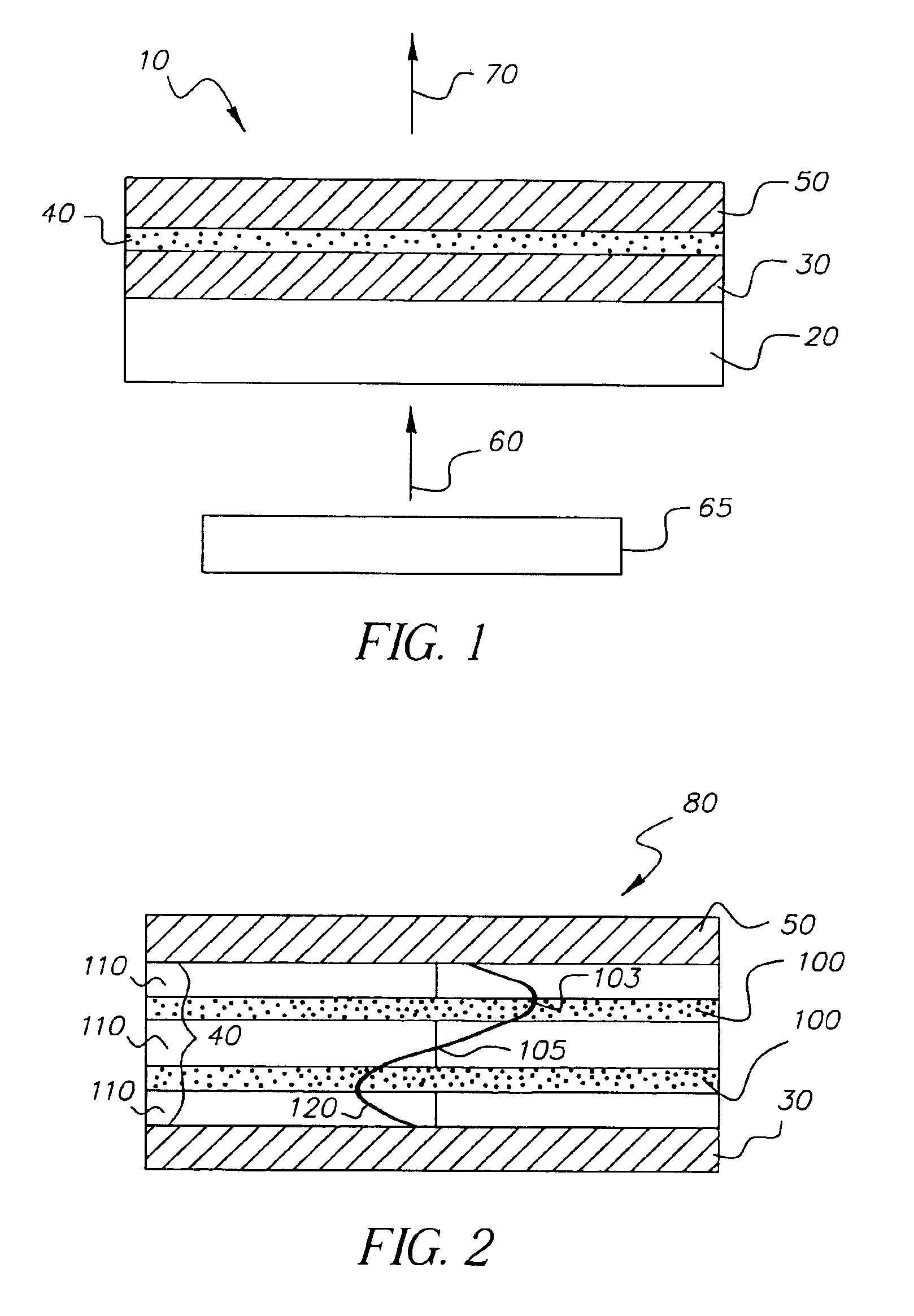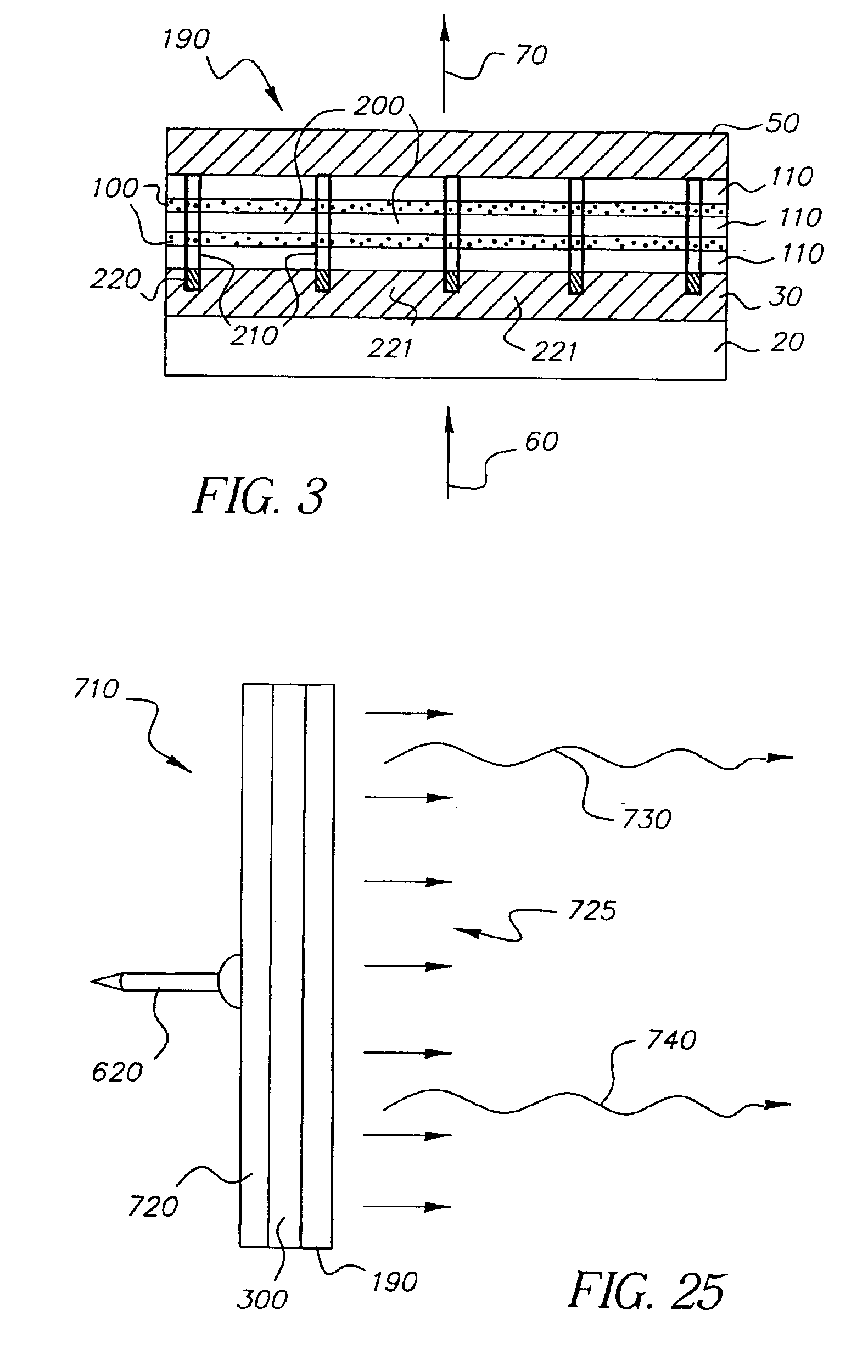Organic laser cavity device having incoherent light as a pumping source
a laser cavity and incoherent light technology, applied in the direction of laser details, excitation process/apparatus, active medium materials, etc., can solve the problems of generating residual electrical emissions, complex current laser system, affecting the effect of laser performance,
- Summary
- Abstract
- Description
- Claims
- Application Information
AI Technical Summary
Benefits of technology
Problems solved by technology
Method used
Image
Examples
Embodiment Construction
[0054]A VCSEL-based microcavity laser satisfies the criterion of low lasing threshold. Using VCSEL-based organic laser cavities should enable optically pumped power density thresholds below 5 W / cm2. As a result, practical organic laser devices can be driven by optically pumping with a variety of readily available, incoherent light sources, such as self-contained photon sources. Herein, self-contained photon sources are photon sources wherein the energy source for emission of light are chemical, radiological, and biological reactions directly producing photons. These self-contained photon sources do not require external electrical connections for their operation.
[0055]Several types of self-contained photon producing processes that do not have electrical noise characteristics can include; incandescence, luminescence, bioluminescence, thermoluminescence, fluorescence, phosphorescence, and radioluminescence photon processes.
[0056]Radioluminescence (RL) is the generation of photons by a ...
PUM
 Login to View More
Login to View More Abstract
Description
Claims
Application Information
 Login to View More
Login to View More - R&D
- Intellectual Property
- Life Sciences
- Materials
- Tech Scout
- Unparalleled Data Quality
- Higher Quality Content
- 60% Fewer Hallucinations
Browse by: Latest US Patents, China's latest patents, Technical Efficacy Thesaurus, Application Domain, Technology Topic, Popular Technical Reports.
© 2025 PatSnap. All rights reserved.Legal|Privacy policy|Modern Slavery Act Transparency Statement|Sitemap|About US| Contact US: help@patsnap.com



